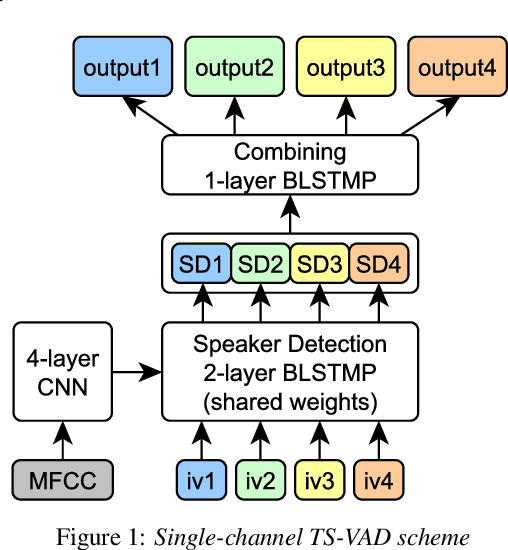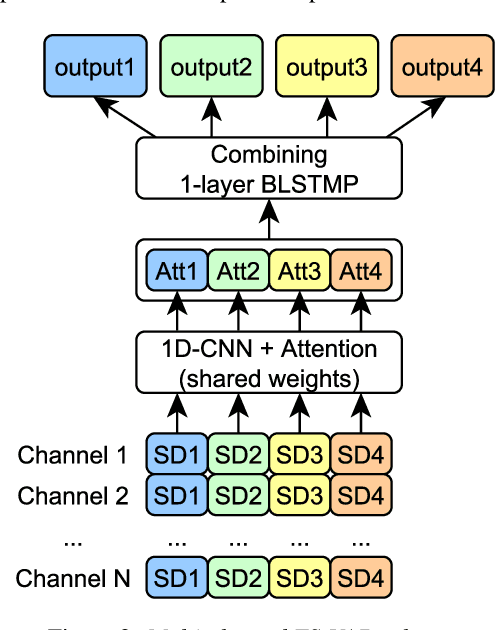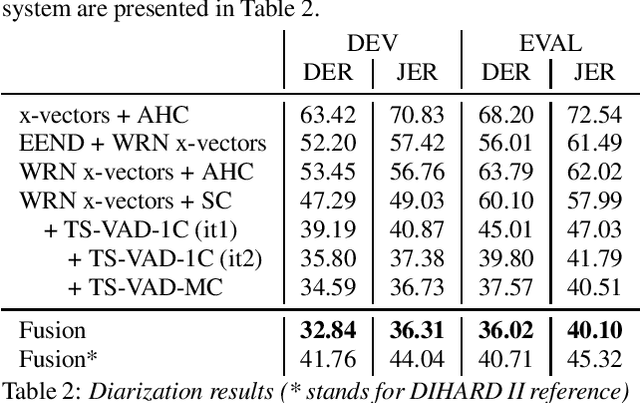Tatiana Timofeeva
STCON System for the CHiME-8 Challenge
Oct 17, 2024



Abstract:This paper describes the STCON system for the CHiME-8 Challenge Task 1 (DASR) aimed at distant automatic speech transcription and diarization with multiple recording devices. Our main attention was paid to carefully trained and tuned diarization pipeline and speaker counting. This allowed to significantly reduce diarization error rate (DER) and obtain more reliable segments for speech separation and recognition. To improve source separation, we designed a Guided Target speaker Extraction (G-TSE) model and used it in conjunction with the traditional Guided Source Separation (GSS) method. To train various parts of our pipeline, we investigated several data augmentation and generation techniques, which helped us to improve the overall system quality.
Target-Speaker Voice Activity Detection: a Novel Approach for Multi-Speaker Diarization in a Dinner Party Scenario
May 14, 2020



Abstract:Speaker diarization for real-life scenarios is an extremely challenging problem. Widely used clustering-based diarization approaches perform rather poorly in such conditions, mainly due to the limited ability to handle overlapping speech. We propose a novel Target-Speaker Voice Activity Detection (TS-VAD) approach, which directly predicts an activity of each speaker on each time frame. TS-VAD model takes conventional speech features (e.g., MFCC) along with i-vectors for each speaker as inputs. A set of binary classification output layers produces activities of each speaker. I-vectors can be estimated iteratively, starting with a strong clustering-based diarization. We also extend the TS-VAD approach to the multi-microphone case using a simple attention mechanism on top of hidden representations extracted from the single-channel TS-VAD model. Moreover, post-processing strategies for the predicted speaker activity probabilities are investigated. Experiments on the CHiME-6 unsegmented data show that TS-VAD achieves state-of-the-art results outperforming the baseline x-vector-based system by more than 30% Diarization Error Rate (DER) abs.
 Add to Chrome
Add to Chrome Add to Firefox
Add to Firefox Add to Edge
Add to Edge